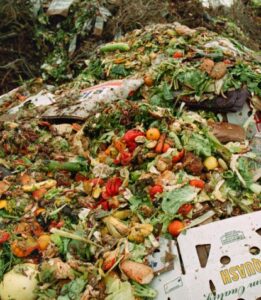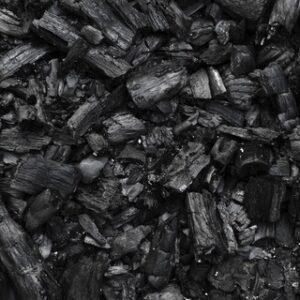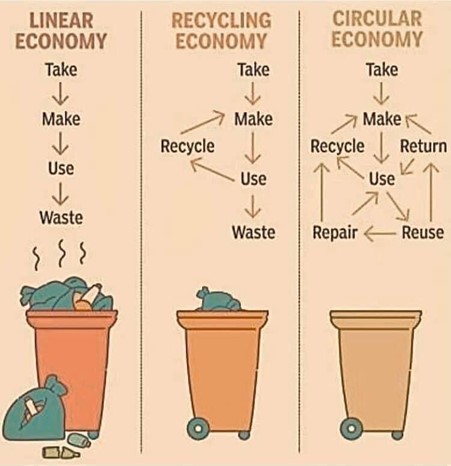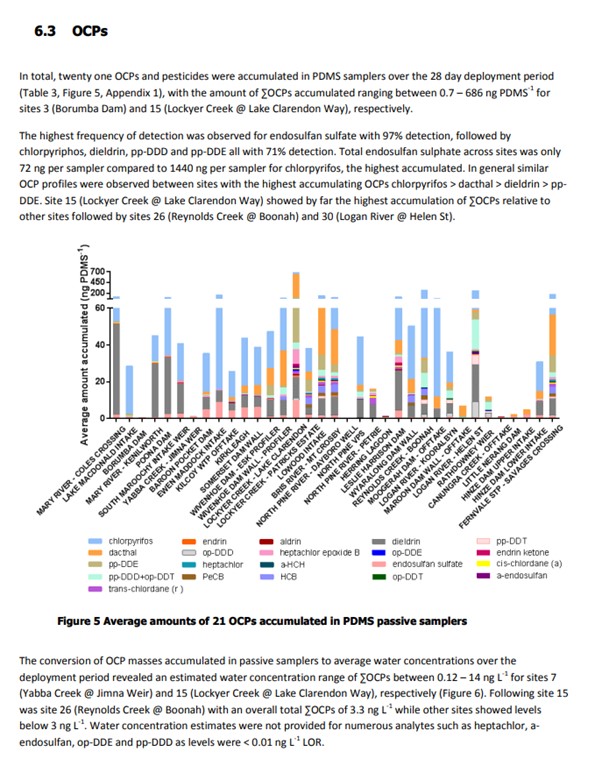Regenerative agriculture and business are about finding the double (or triple) bottom line and ensuring that every action leads us closer to our Holistic Context or vision. We want nutrients cycling in our system and do this by engaging natures inputs- the things we get for free! This is also the basis of a “Circular Economy”.
So, what if we applied regenerative or holistic thinking to urban issues? What would give us the biggest “bang for buck” in terms of a triple bottom line in beginning a Circular Economy? An old employer once told me that there’s money in the stuff others don’t want to touch- WASTE; so that’s a good place to start.
Waste on a farm isn’t waste, it’s nutrition. It is stolen by gravity in water runoff, lost in smoke if it is burnt (burning has no place in a regenerative system) or oxidised from dead plants. Systems like Natural Sequence Farming teach measures for cycling nutrition against gravity and incorporating it into the soil through plants starting high in the landscape and working down to the wetlands. Animals & birds can carry nutrition from low points to high and help stimulate plants in the process, so you have a circular system where matter isn’t created or destroyed it just changes form.
 Urban green waste is buried, sometimes mulched but often is lost in gasses emitted as it decomposes. This is a big problem for councils trying to meet “Net Zero” targets. Even as mulch, over time it is still lost unless incorporated into soil (rather than laid on top). Admittingly this loss is then attributed to other industries. Soil organic matter isn’t even stable and soil carbon levels can change with seasons or under different management*.
Urban green waste is buried, sometimes mulched but often is lost in gasses emitted as it decomposes. This is a big problem for councils trying to meet “Net Zero” targets. Even as mulch, over time it is still lost unless incorporated into soil (rather than laid on top). Admittingly this loss is then attributed to other industries. Soil organic matter isn’t even stable and soil carbon levels can change with seasons or under different management*.
Carbon itself is an extremely stable molecule with a 5730-year half-life. One of the purest forms of carbon is Biochar, made by Pyrolysis. High temperature, low oxygen conditions enable waste to be converted to Biochar without the emissions or nutrition loss of uncontrolled burning. Gas & heat are collected from Pyrolysis units and used for power generation, heating or drying. 
Almost any form of waste can be converted to Biochar and thanks to the emerging carbon market, the resultant biochar product is currently worth $150-$300 per tonne (DM) just for it’s sequestered carbon value. Other offtakes such as electricity from Syngas, CO2, wood vinegar and heat are all saleable and in high demand**. This is on top of the value gained from not having to deal with green waste by turning it into less stable products like mulch- at a cost.
But a Circular Economy doesn’t stop there…
The uses for Biochar, at different grades are surprising. In agriculture it is fed to animals to reduce emissions by over 30%**(ever taken a Charcoal tablet when you have gas?); subsequently weight gain is increased significantly and as a microtoxin inhibitor, it has been proven to reduce poisoning risk and bloat in stock. Old farmers used to leave a burnt log in the paddock to identify the cattle getting sick as they’d lick the charcoal. Once it passes through an animal it is incorporated into soil along with microbes from the animal’s gut to be a long-term fertiliser.
Biochar has been used since the time of the Incas as a direct soil additive for food crops activated with microbes and often a nitrogen source like urine. It’s a buffer in acidic soil that decontaminates – a big issue in ex conventionally farmed or mined areas like Gympie. It’s used in urban areas to filter large quantities of storm water *** as long chain heavy metals and chemicals attach to the stable carbon molecule breaking it down by “out lasting” it. The contamination issues in South-East Qld drinking water supply**** could be addressed by dealing with the waste problem faced in South-East Qld. Imagine that!
This Black Gold is probably the best long-term solution we have for real carbon sequestration (not many trees have a half-life of 5000 years), it could decontaminate and amend degraded farming land and for the triple bottom line; make our animals (and people) healthier. It is carbon positive, hence cashflow positive to produce (in our Carbon economy), and we could have unlimited supply and virtually unlimited demand for it when it is made available.
Perhaps Gympie, with it’s forestry resources and waste issues could save Queensland’s economy again with this Black Gold? (except Logan City has already done it!)*****.
Kandanga Farm Store has marketed Biochar into the Livestock market for over 5 years for high value agricultural uses. It is involved in projects at Barcaldine, Noosa, Beaudesert, Charleville and Central Qld. based on developing Biochar markets and has sold product across 3 states of Australia.
** https://www.bosrural.com.au/biochar-for-feed
*** https://www.youtube.com/watch?v=gGCL8_QzXTM
**** Catchment and Drinking Water Quality Micro Pollutant Monitoring Program – Passive Sampling. Report 4 – Summer 2016, June 3, 2016 UQ/Entox (National Research Centre for Environmental Toxicology). P24 6.3.
***** https://www.logan.qld.gov.au/news/article/822/sewage-solution-lights-up-logan-s-carbon-ambitions


Catchment and Drinking Water Quality Micro Pollutant Monitoring Program – Passive Sampling. Report 4 – Summer 2016, June 3, 2016 UQ/Entox (National Research Centre for Environmental Toxicology). P24 6.3.